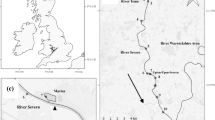Abstract
We studied the distribution and abundance of seabirds along the Beagle Channel during February and March 1997. We examined the distribution and abundance, following the strip transects methodology, of species and their relation with habitat and foraging strategy of the birds. We divided the study area into six zones a priori. We made 20 trips aboard tourist vessels. The species most abundant in the study area were the imperial cormorant, dolphin gull, kelp gull, black-browed albatross, South American tern and Chilean skua. We concluded that seabirds were distributed non-randomly in the marine environment of the Beagle Channel. The shallow waters present the largest seabird density in the Beagle Channel. The Islas Bridges zone had the highest total density of seabirds, followed by the Bahía Ushuaia zone. The first zone holds colonies of most of the seabird species nesting in the channel. The presence of seabirds in the Bahía Ushuaia zone is influenced by the Islas Bridges zone itself, from where breeding birds come, and also by Ushuaia city, the port and the open garbage dump, where birds that feed on carrion can find alternative sources of food. The distribution of species in the whole study area was related to the foraging strategies, interactions with other species and characteristics of the habitat. We identified three groups of bird species and four independent species by cluster analysis. The first group included the black-browed albatross and the Magellanic penguin, which were associated with deep waters. In the second group the imperial cormorant and Chilean skua were associated with shallow waters along the study area, especially in the Islas Bridges zone where these species breed. Lastly, the kelp gull and southern giant petrel formed interspecific groups on the coast in places influenced by humans. The independent species numbered four. The rock cormorant associated with shallow waters in kelp bed areas. Showing a completely different foraging behaviour from the rest of the species, the dolphin gull occurred in shallow waters in the Islas Bridges zone associated with sea lions' and cormorants' colonies. Diving petrels were associated with deep waters on the west side of the channel. The South American tern was distributed all along the study area.
Similar content being viewed by others
Author information
Authors and Affiliations
Additional information
Accepted: 14 November 1999
Rights and permissions
About this article
Cite this article
Raya Rey, A., Schiavini, A. Distribution, abundance and associations of seabirds in the Beagle Channel, Tierra del Fuego, Argentina. Polar Biol 23, 338–345 (2000). https://doi.org/10.1007/s003000050453
Issue Date:
DOI: https://doi.org/10.1007/s003000050453




